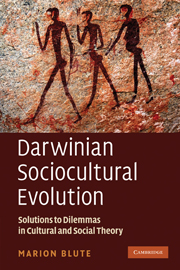Mating markets
Darwinian Sociocultural Evolution Chpt. 4 was on social interaction within a population – competition, conflict and cooperation. After general discussions of relevant evolutionary principles, these were applied to gender differences and relations. The latter discussion was expanded on in Blute (2019).
Rather than males as reproductive parasites of females (as has often been thought, most likely at high densities relative to resources where the most common female ‘quality’ strategy would be most beneficial) or even females as reproductive predators of males (most likely at low densities where the most common male ‘quantity’ strategy would be most beneficial), the approach suggested that the sexes have somewhat different naturally-selected frequency and/or quality ecologically-oriented strategies and that sex is trade in these. The sexes have what economists call different “comparative advantages” compensating for the up to two-fold cost of sex. Males and females (or male and female functions in hermaphrodites) have sex i.e. then trade because males including females among their offspring and females including males among their offspring bet-hedges under uncertainty – reducing the risk of extinction for families, populations or species. Protecting the portfolio is the same reason why humans invest in index funds rather than trying to pick stocks or dollar cost average rather than trying to time markets. Sexual competition and selection on the other hand is conflict over the profits of that trade.
Because natural selection comes logically, historically and developmentally before sexual selection, the table in the 2019 article (see below) more clearly illustrates the consequences of the results of natural for sexual selection than did Table 2. on p. 100 of the book. For example, in line 1 below, if males are naturally selected to be more frequent and females to be higher quality (i.e. have a higher per capita cost), then the results for sexual selection would be males intrasexually selected (male-male competition for mates and/or gametes) and females intersexually selected (active choice for a male mate and/or gametes). Table 1 as a whole illustrates how combining quantity and quality approaches based on natural selection can explain the resulting conventional sex roles, the sex-role reversed, inter as well as intra sexual selection, and passive as well as active choice. As well, the approach implies that sexual selection could equilibrate the sex allocation instead of Fisher’s sex allocation principle and that Mayr’s species definition could be made explanatory. The latter can be restated as “a species is a biological, specifically a mating market, one isolated from other such markets”.
Table 1. Ecologically oriented, naturally selected frequency and mean quality of males and females and their implications for the directions and forms of sexual selection*
Males Females Direction and forms of sexual selection
M Qm F Qf
h l l h Males intrasexually selected, Females intersexually selected (active choice)
l h h l Females intrasexually selected, Males intersexually selected (active choice)
h l h l Both sexes mate multiply, Little or no sexual selection
l h l h Pair bonded, Little or no sexual selection
h h l l Males intra & intersexually selected (female passive choice)
l l h h Females intra & intersexually selected (male passive choice)
*M frequency of males, Qm mean quality of a male, F frequency of females, Qf mean quality of a female, h high, l low
Blute, Marion. 2019. “Mating markets: A naturally selected sex allocation theory of sexual selection.” Biological Theory 14(2) 2019: 103-111.


Leave a comment